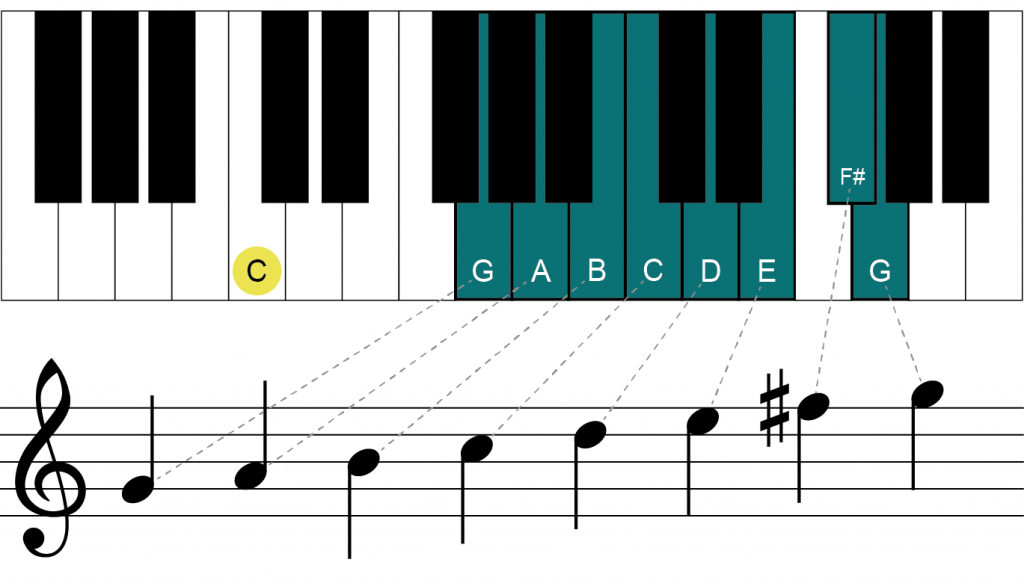9 Intro to Key Signatures
A key signature is a series of sharps or flats presented at the beginning of a section or piece of music that identifies the notes and pitches most likely to be found in the music. The major key signatures reflect the notes and pitches needed to create the major scales.

Rather than placing a sharp or a flat before every F in the key of G major, we can accomplish the exact same sound by placing an F# right beside the clef, creating a key signature. The scale above and the scale below sound EXACTLY the same.

When a sharp or flat is added to the key signature, it applies to all the notes with the same name, regardless of where they appear on the staff. In the example below, both of the Fs would be F#s.

Using a key signature makes reading music much easier. Examine the following short example:



